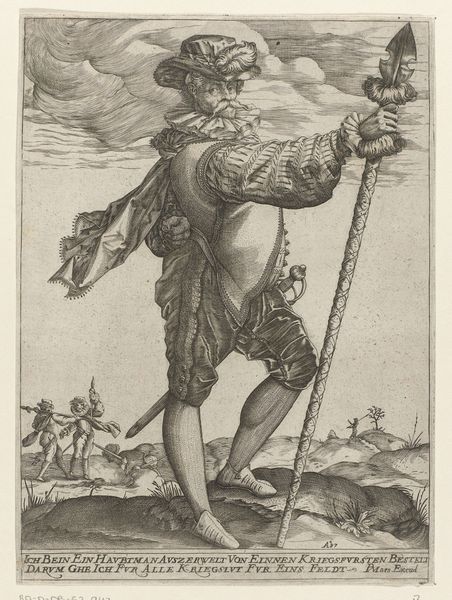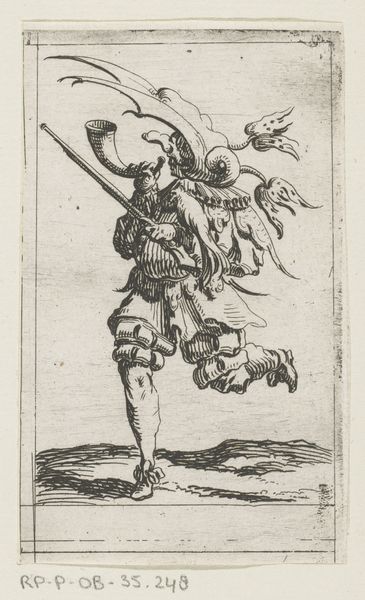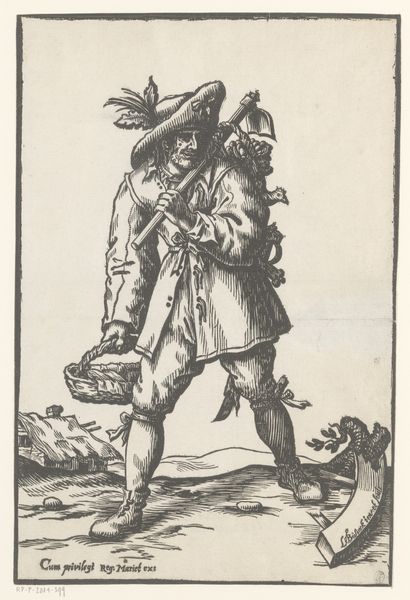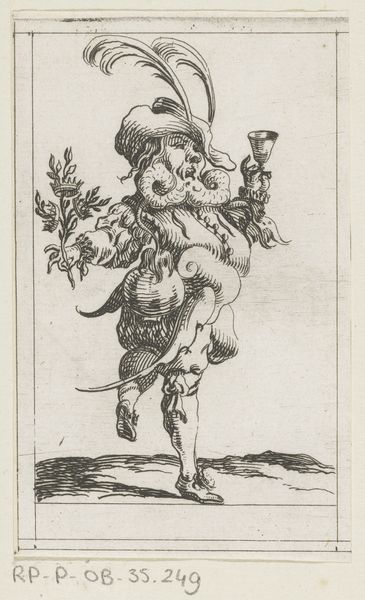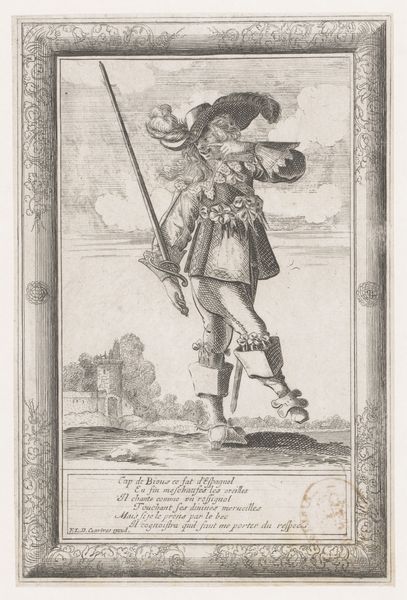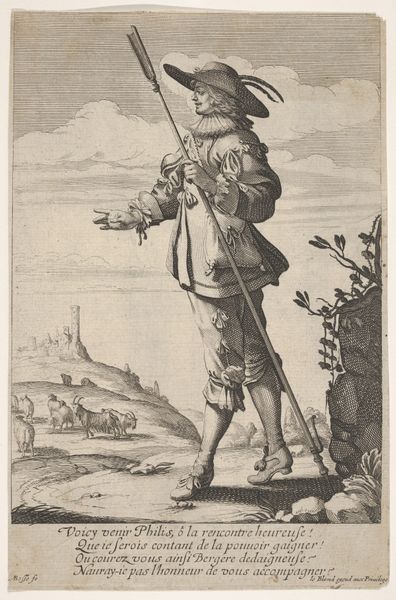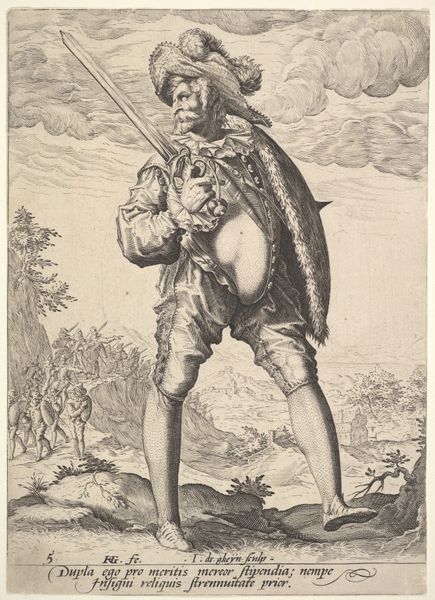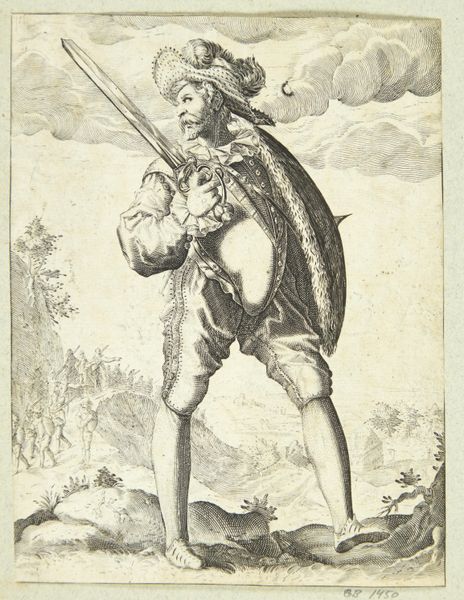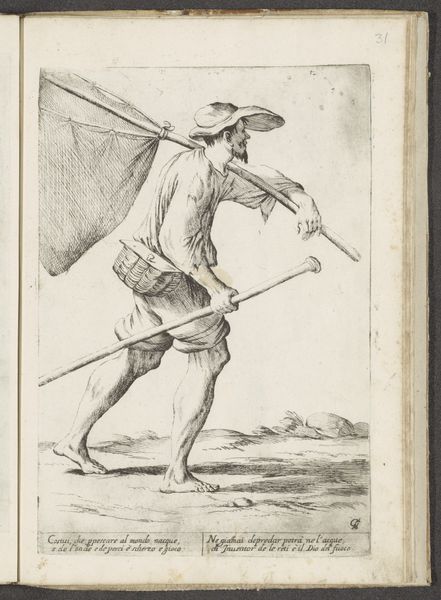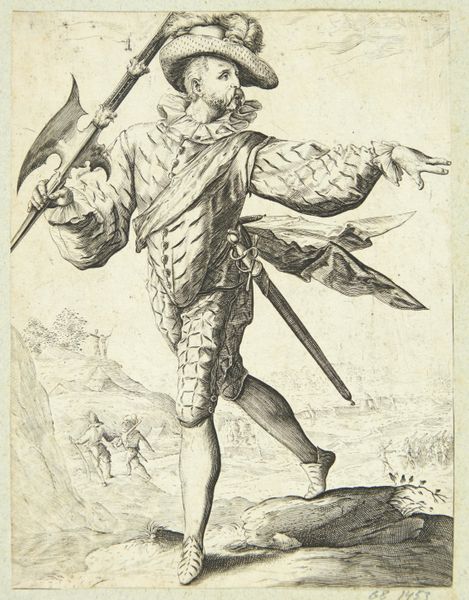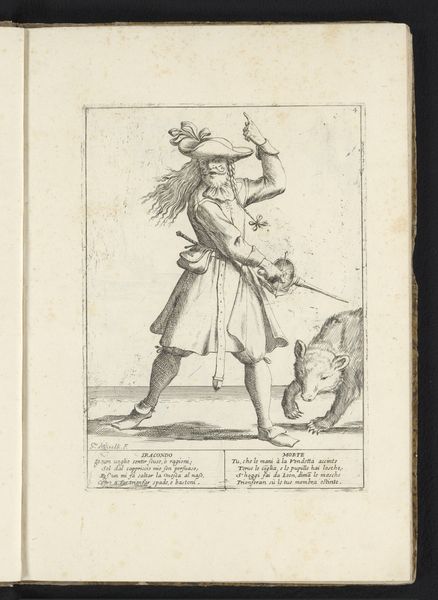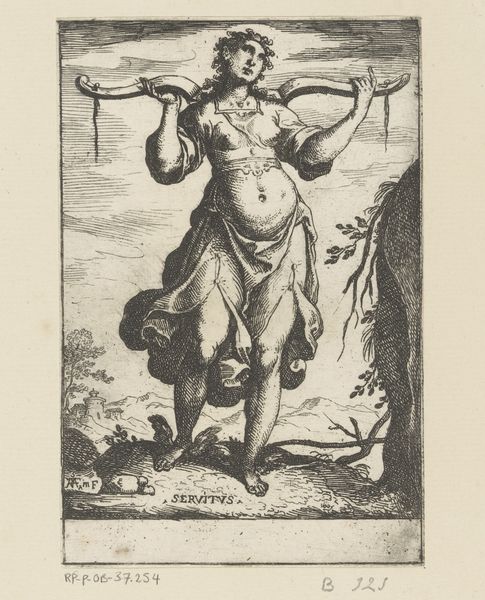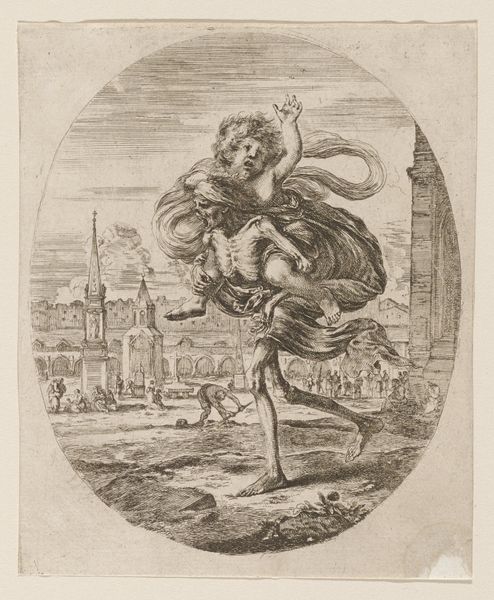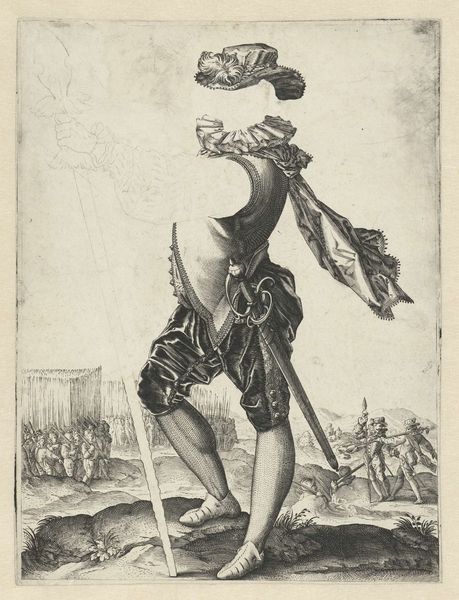
Edelman met bril, zwaard en pijp in de hand een pas naar links makend 1599 - 1647
0:00
0:00
print, engraving
#
narrative-art
#
baroque
#
pen drawing
# print
#
caricature
#
pencil sketch
#
engraving
Dimensions: height 208 mm, width 138 mm
Copyright: Rijks Museum: Open Domain
Curator: The Rijksmuseum presents to us today an intriguing engraving, "Edelman met bril, zwaard en pijp in de hand een pas naar links makend", made sometime between 1599 and 1647 by an anonymous artist. My initial response is of a chaotic ballet, full of satire. Editor: It certainly is, with that spindly figure striking a theatrical pose. Considering its age, the print must have been widely reproduced and circulated. I wonder, what was the paper made of? Who was involved in the printmaking process itself beyond just the known "artist", from the workshops creating paper and ink to the networks distributing it? Curator: Good question. The engraving process itself is fascinating, a meticulous labor to translate an image into a series of etched lines on a metal plate. One can imagine workshops bustling with activity, apprentices learning the trade, the air thick with the smell of acid. Editor: Right, and engravings like this became vehicles for social commentary, reaching broad audiences. Just look at this character—ostentatiously adorned with sword, glasses and feathered hat; puffing on his pipe in the foreground as the landscape gets eclipsed behind him, all whilst wobbling on one foot. The text even mocks the same arrogance, the absurdity of claiming to "shake the earth." There’s clearly something socio-political being critiqued. Curator: Precisely. And that arrogance isn't limited to those in power; consider who could actually *afford* such prints. There’s an element of consumption and status interwoven with the satire. Was this aimed at the merchant class mimicking aristocracy, perhaps? Editor: Yes, there is that tension in representation and readership. Perhaps this engraving was sold in print shop windows throughout Amsterdam as a symbolic call out against that sort of performative authority. After all, how often were marginalized people really centered within similar pieces meant for mass circulation? Curator: Thinking about its lasting impact, it makes me ponder the legacy of satire itself. To whom did this style of caricature historically serve, and is it any different now? Editor: Ultimately, this engraving serves as an enduring testament to how images functioned in society back then and what kind of value or currency we place on them today. Curator: Indeed, this artwork, seemingly small and contained, opens up avenues of inquiry that are incredibly relevant even centuries later.
Comments
No comments
Be the first to comment and join the conversation on the ultimate creative platform.
